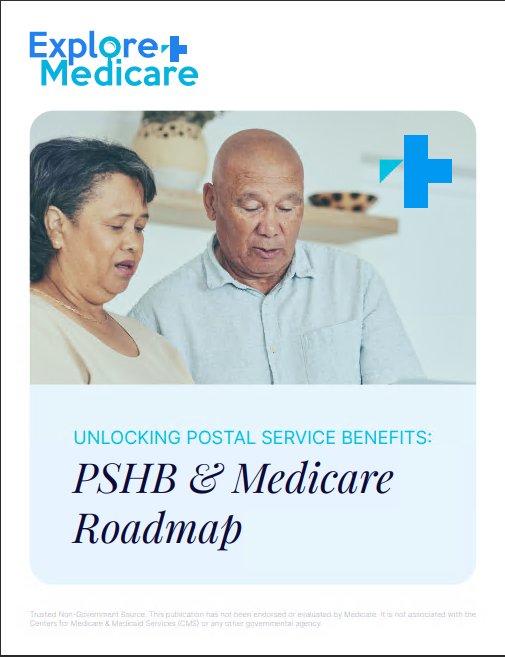Key Takeaways:
-
Medicare premiums, deductibles, and out-of-pocket costs often rise each year, impacting your budget. Understanding these increases helps you prepare in advance.
-
Reviewing your Medicare plan, exploring cost-saving strategies, and planning ahead can help you keep your healthcare expenses manageable.
How Medicare Premium Increases Impact Your Wallet
If you’re on Medicare, you probably notice that costs don’t stay the same from year to year. Whether it’s your monthly premium, deductible, or copayments, these amounts tend to increase annually. Understanding why Medicare costs rise and how to manage them can help you maintain financial stability without sacrificing healthcare coverage.
Why Do Medicare Premiums Increase?
Every year, Medicare adjusts costs based on several factors, including:
-
Inflation: Healthcare costs generally rise over time, leading to higher premiums and deductibles.
-
Medicare Spending Trends: The amount Medicare spends on healthcare services and prescription drugs directly affects costs for beneficiaries.
-
Policy Changes: Legislative updates and new Medicare rules can influence costs, sometimes increasing out-of-pocket expenses.
-
Income-Related Adjustments: If your income exceeds certain thresholds, you may pay higher premiums due to Medicare’s Income-Related Monthly Adjustment Amount (IRMAA).
Knowing what’s driving these increases helps you anticipate potential cost changes and plan accordingly.
How to Prepare for Medicare Cost Increases
You can’t stop Medicare premiums from rising, but you can take steps to ensure they don’t throw off your budget. Here’s how:
1. Stay Informed About Annual Changes
Each fall, Medicare releases updated premium and deductible amounts for the upcoming year. Take the time to review these updates so you can adjust your budget before the new rates take effect on January 1. Medicare’s Open Enrollment period (October 15 – December 7) is the perfect time to evaluate your options and make any necessary changes.
2. Review Your Medicare Plan Options
Medicare offers different coverage options, including Original Medicare (Parts A and B), Medicare Advantage (Part C), and Part D prescription drug plans. Each plan has different cost structures, and switching plans during Open Enrollment could help you save money.
Some key areas to compare include:
-
Premiums: The monthly amount you pay for coverage.
-
Deductibles: The amount you must pay before your coverage kicks in.
-
Copayments and Coinsurance: The portion of costs you pay when receiving medical care or filling prescriptions.
Exploring alternative plans that better suit your financial situation can help keep your costs under control.
3. Budget for Healthcare Expenses
If you’re on a fixed income, unexpected cost increases can be stressful. Planning ahead can help you avoid financial strain. Consider:
-
Setting aside a portion of your income each month specifically for healthcare expenses.
-
Reviewing your savings to ensure you have funds available for unexpected medical costs.
-
Using a Health Savings Account (HSA) or Flexible Spending Account (FSA) if eligible to set aside pre-tax dollars for medical expenses.
4. Take Advantage of Preventive Care
Medicare covers many preventive services at no additional cost. By scheduling routine check-ups and screenings, you can catch health issues early, potentially avoiding costly medical treatments down the road.
5. Consider Medicare Savings Programs
If you’re struggling with Medicare costs, there are programs that may help, including:
-
Medicare Savings Programs (MSPs): These programs help low-income beneficiaries pay for premiums, deductibles, and other costs.
-
Extra Help: This program helps with prescription drug costs for those who qualify based on income and resources.
-
State Assistance Programs: Some states offer additional benefits to help with Medicare expenses.
Checking your eligibility for these programs could lead to significant savings.
Managing Prescription Drug Costs
Prescription drug prices are another area where costs can increase each year. Here’s how to manage them effectively:
1. Compare Part D Plans
Medicare Part D plans vary in cost and coverage. Reviewing your options annually can help you find a plan that covers your prescriptions at the lowest possible cost.
2. Use Generic Medications
Generic drugs often cost significantly less than brand-name versions. Ask your doctor if a generic alternative is available for your prescriptions.
3. Use Preferred Pharmacies
Some Medicare drug plans have preferred pharmacies that offer lower prices. Filling your prescriptions at these locations could save you money.
4. Look Into Mail-Order Options
Many plans offer lower prices on prescriptions if you use mail-order services, which can also provide added convenience.
Planning for Future Medicare Cost Increases
Medicare costs will continue to rise over time, so planning for long-term healthcare expenses is crucial. Here’s what you can do:
1. Estimate Future Healthcare Costs
Consider factors such as:
-
Projected increases in Medicare premiums and deductibles.
-
Potential long-term care needs and associated costs.
-
How inflation may affect healthcare expenses over the next 5-10 years.
2. Adjust Your Retirement Budget
If you’re retired or planning to retire soon, factor Medicare expenses into your financial planning. Work with a financial advisor to ensure you have enough savings to cover healthcare costs as they rise.
3. Stay on Top of Medicare Changes
Medicare policies and costs can change yearly. Keeping up with updates can help you make informed decisions and avoid unexpected expenses.
Keeping Your Healthcare Costs Under Control
Rising Medicare premiums are a reality, but that doesn’t mean you have to let them disrupt your financial stability. By staying informed, exploring plan options, budgeting for healthcare costs, and taking advantage of savings programs, you can manage expenses and maintain access to quality care.
If you need assistance navigating Medicare cost changes, reach out to a professional listed on this website. They can help you evaluate your options, find potential savings, and create a plan that keeps your budget on track.








